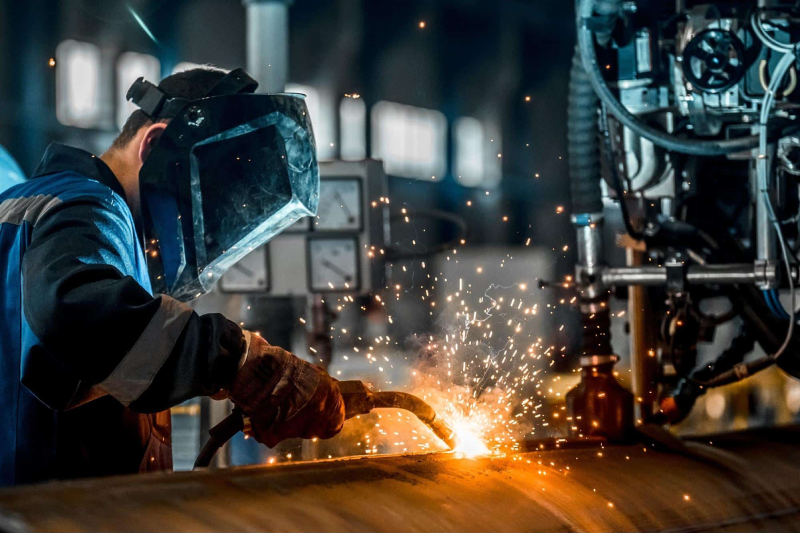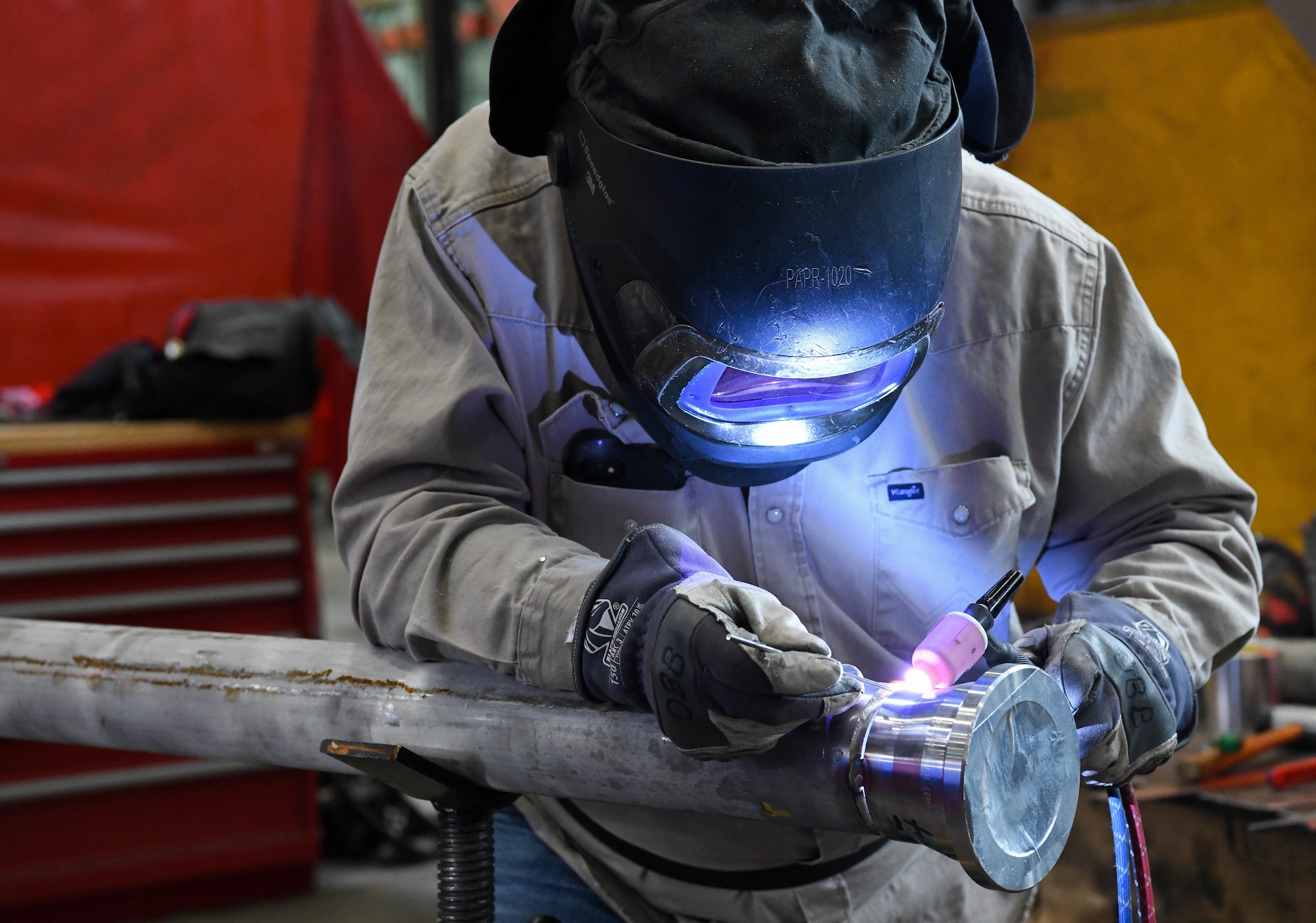All Concerning Welding: Secret Insights Into Techniques and Best Practices for Success
Welding encompasses a variety of strategies, each suited for particular materials and applications. Understanding these methods, such as GMAW, SMAW, and TIG, is essential for attaining optimal outcomes. Moreover, the right tools and safety practices can not be ignored. As prep work and repairing play vital functions in the welding procedure, grasping these elements can substantially enhance the top quality of the end product. What are the crucial elements that guarantee a successful weld?
Recognizing Various Welding Strategies
Welding strategies include a variety of methods, each matched to certain applications and materials. Amongst one of the most typical techniques are Gas Metal Arc Welding (GMAW), Secured Steel Arc Welding (SMAW), and Tungsten Inert Gas Welding (TIG) GMAW, additionally known as MIG welding, is prominent for its rate and versatility, making it optimal for thin products. SMAW, or stick welding, is favored for its simpleness and efficiency in exterior environments, specifically with thicker metals. TIG welding provides accuracy and control, making it ideal for complex job and non-ferrous metals (Fabrication). Each technique has its distinct benefits and factors to consider, allowing welders to choose the finest method based on the task's needs, material kind, and desired results. Comprehending these techniques is vital for successful welding
Essential Welding Tools and Tools
While different welding methods call for specific abilities, the ideal equipment and tools are just as essential for accomplishing top quality results. Necessary welding tools consists of welding devices, which vary depending on the technique-- such as MIG, TIG, or stick welding. Protective equipment, including handwear covers, headgears, and aprons, guarantees security and comfort throughout the procedure. On top of that, clamps and fixtures aid protect materials in position, making certain precision in welds. Consumables like welding poles, cord, and securing gas are likewise essential elements that influence the quality of the weld. Tools such as grinders and cutters promote surface prep work and post-weld completing, adding to a professional outcome. Purchasing top quality tools eventually enhances the performance and effectiveness of welding projects.
Safety And Security Practices in Welding
Proper security techniques are essential in the welding market to secure workers from potential threats. Welders need to use suitable individual safety equipment (PPE), including headgears with proper shading, gloves, and flame-resistant garments. Ample air flow is essential to lower exposure to hazardous fumes and gases created throughout the welding procedure. In addition, employees ought to be trained in the proper handling of welding devices to avoid mishaps. Fire safety and security procedures, such as maintaining flammable products away from the welding area and having fire extinguishers easily available, are essential. Regular examinations of tools and offices can help identify potential hazards prior to they bring about accidents. By sticking to these safety and security methods, welders can produce a much safer working environment and reduce threats associated with their trade.
Preparing Materials for Welding
Preparing products for welding is a crucial step that significantly influences the top quality and stability of the end product (Montana Mobile Welding and Repair). Proper preparation involves cleansing the surface areas to get rid of impurities such as rust, oil, and dust, which can compromise the weld. Strategies such as grinding, sanding, or using solvents are generally utilized to accomplish a tidy surface area. In addition, guaranteeing that the products mesh comfortably is important; gaps can lead to weak welds. It's also vital to take into consideration the positioning and positioning of the parts, as this will certainly influence the convenience of welding and the final result. Selecting the ideal filler product and making certain compatibility with the base metals is crucial for attaining strong, long lasting welds.
Tips for Getting High-Quality Welds
Achieving premium welds calls for focus to information and adherence to finest methods throughout the welding process. Correct joint prep work is important, making sure surface areas are free and clean from contaminants. Selecting the ideal filler material and welding method based on the base steels is vital for excellent bonding. Preserving consistent traveling speed and angle while welding can promote and stop defects harmony. Furthermore, controlling warm input is essential; excessive heat can bring about warping and damaged joints. If required, on a regular basis examining the welds during the procedure permits for immediate modifications. Utilizing appropriate post-weld therapies, such as cleansing and stress and anxiety alleviation, can boost the sturdiness and honesty of the weld, inevitably ensuring an effective outcome.
Troubleshooting Typical Welding Issues
Welding typically offers obstacles that can impact the top quality and site web integrity of the final item. Typical concerns such as porosity, inconsistent weld grains, and overheating can develop, each requiring certain fixing techniques. Comprehending these troubles is important for this hyperlink welders to improve their skills and achieve excellent outcomes.
Porosity Troubles Described
Porosity can commonly be overlooked, it stays a critical issue in welding that can endanger the honesty of a finished product. Porosity refers to the visibility of little gas pockets within the weld grain, which can lead and compromise the joint to premature failure. This issue usually occurs from pollutants, wetness, or inappropriate shielding gas coverage during the welding procedure. To alleviate porosity, welders ought to verify that the base materials are dry and tidy, utilize suitable shielding gases, and keep regular welding criteria. Frequently examining the devices and environment can likewise help identify potential issues before they manifest in the weld. Addressing porosity efficiently is crucial for attaining solid, durable welds that meet high quality criteria.

Inconsistent Weld Beans
Inconsistent weld grains can greatly influence the high quality and strength of a completed item. Numerous aspects contribute to this problem, consisting of improper travel rate, inaccurate amperage settings, and inconsistent electrode angles. When the welder moves too promptly, a grain may show up narrow and lack penetration, while moving too slowly can create extreme build-up. Furthermore, making use of the wrong amperage can cause either undercutting or excessive spatter, both of which concession weld integrity. The welder's technique, such as inconsistent lantern movement, can likewise cause uneven bead look. To reduce these troubles, welders should concentrate on preserving stable, controlled movements and ensuring correct equipment setups to accomplish uniformity in welding magnesium their welds. Uniformity is vital to attaining strong and reliable welds.
Overheating and Warping Issues
Extreme warm throughout the welding process can result in considerable overheating and warping problems, influencing the architectural integrity of the workpiece. These troubles frequently materialize as distortion, which can compromise alignment and fit-up, making further setting up challenging. Factors adding to overheating consist of the choice of welding parameters, such as voltage and take a trip speed, in addition to the type of material being welded. To reduce these concerns, welders need to maintain consistent traveling speed and ideal heat input while checking the work surface temperature level. Furthermore, pre-heating or post-weld warmth therapy can help minimize anxieties caused by quick air conditioning - Montana Mobile Welding and Repair Belgrade Fabrication. Regular evaluation and adherence to finest practices are essential in protecting against getting too hot and guaranteeing the long life and reliability of bonded frameworks
Regularly Asked Inquiries
What Are the Occupation Opportunities in the Welding Market?
The welding sector supplies varied job possibilities, including placements as welders, inspectors, educators, and designers. Experts can function in production, building, aerospace, and automobile fields, benefiting from strong demand and competitive salaries in numerous roles.
Just How Can I Boost My Welding Speed Without Compromising High Quality?
To enhance welding rate without giving up quality, one ought to exercise effective techniques, keep tools, maximize setups, and improve hand-eye coordination. Regular training and seeking responses can also greatly add to achieving faster, high-grade welds.
What Qualifications Are Offered for Welders?
Countless accreditations exist for welders, consisting of those from the American Welding Society (AWS), the National Facility for Construction Education And Learning and Study (NCCER), and different industry-specific organizations. These qualifications boost employability and show ability proficiency.
Just How Does Welding Affect the Characteristics of Metals?
Welding influences the buildings of steels by altering their microstructure, which can lead to changes in firmness, ductility, and stamina. Warm input and cooling prices during the procedure significantly affect these material qualities.
Can I Bonded Dissimilar Metals Together?
